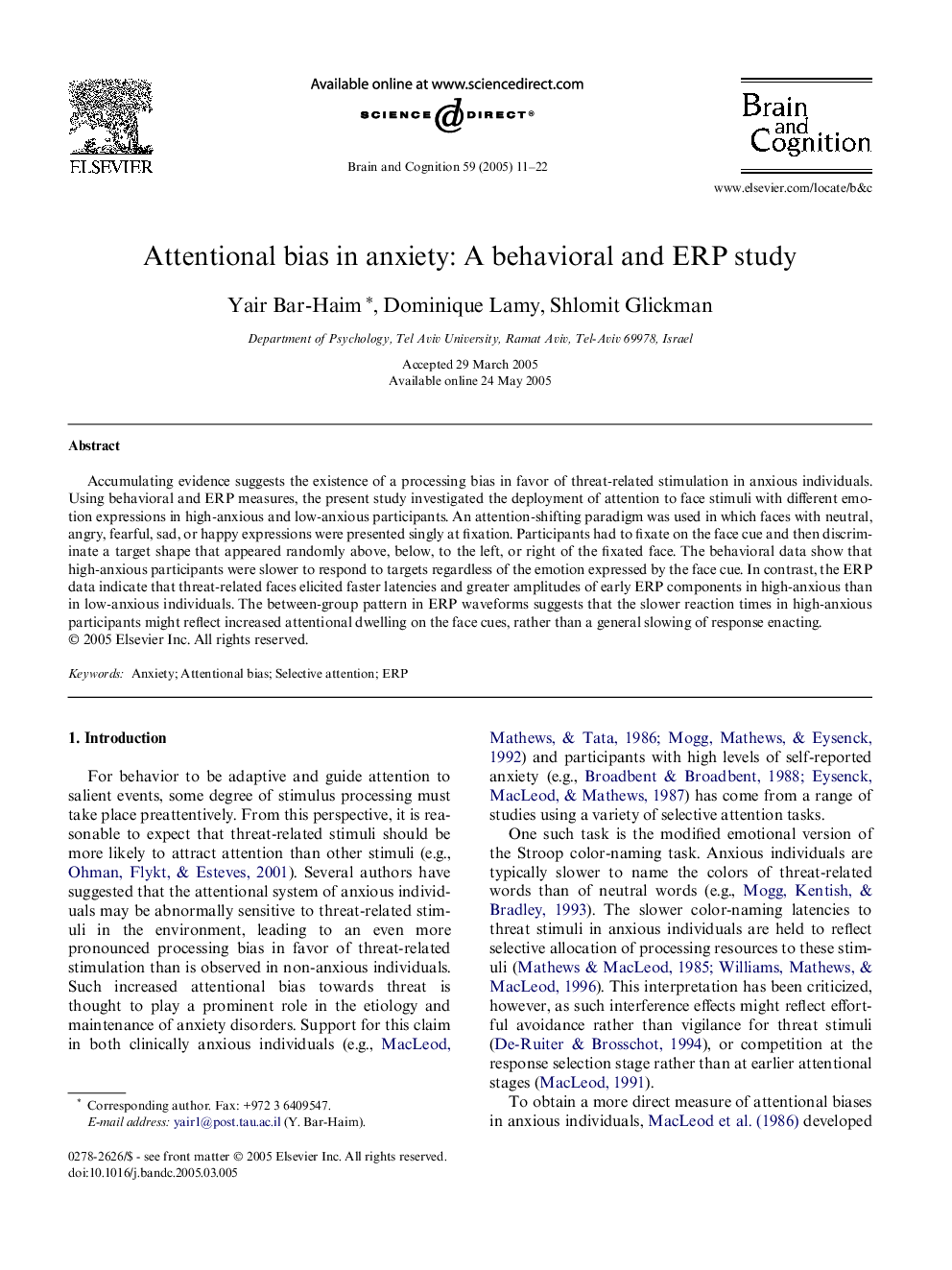| Article ID | Journal | Published Year | Pages | File Type |
|---|---|---|---|---|
| 10455637 | Brain and Cognition | 2005 | 12 Pages |
Abstract
Accumulating evidence suggests the existence of a processing bias in favor of threat-related stimulation in anxious individuals. Using behavioral and ERP measures, the present study investigated the deployment of attention to face stimuli with different emotion expressions in high-anxious and low-anxious participants. An attention-shifting paradigm was used in which faces with neutral, angry, fearful, sad, or happy expressions were presented singly at fixation. Participants had to fixate on the face cue and then discriminate a target shape that appeared randomly above, below, to the left, or right of the fixated face. The behavioral data show that high-anxious participants were slower to respond to targets regardless of the emotion expressed by the face cue. In contrast, the ERP data indicate that threat-related faces elicited faster latencies and greater amplitudes of early ERP components in high-anxious than in low-anxious individuals. The between-group pattern in ERP waveforms suggests that the slower reaction times in high-anxious participants might reflect increased attentional dwelling on the face cues, rather than a general slowing of response enacting.
Related Topics
Life Sciences
Neuroscience
Cognitive Neuroscience
Authors
Yair Bar-Haim, Dominique Lamy, Shlomit Glickman,
